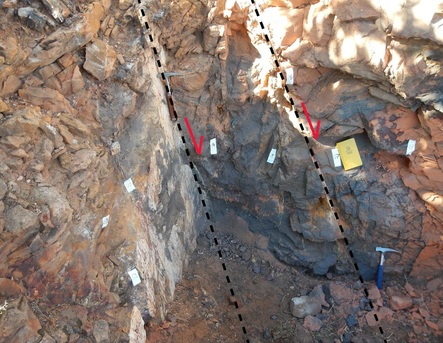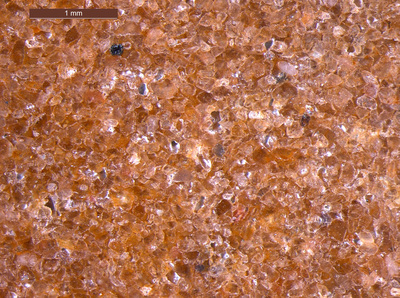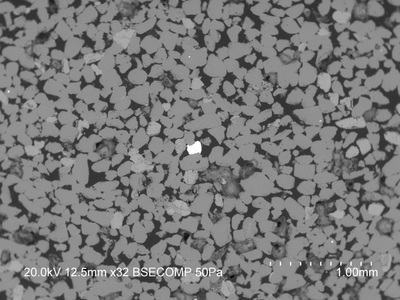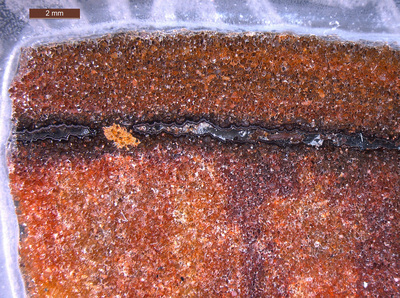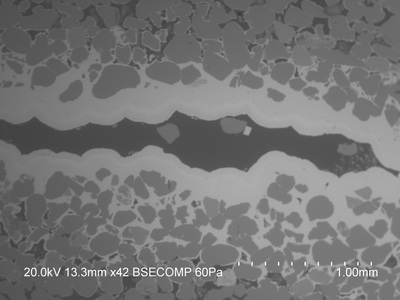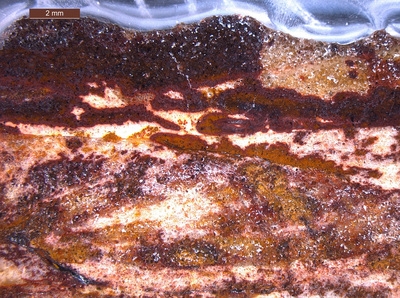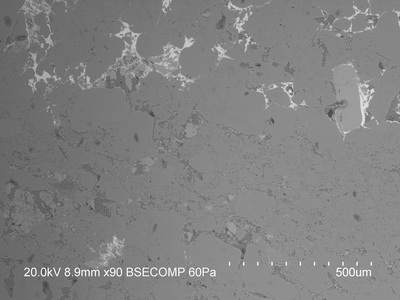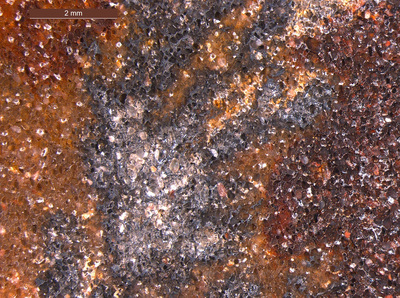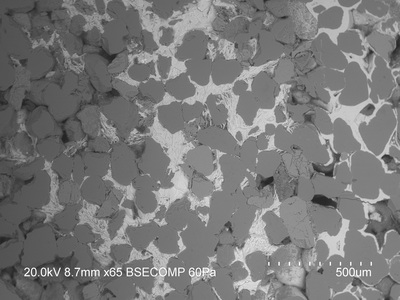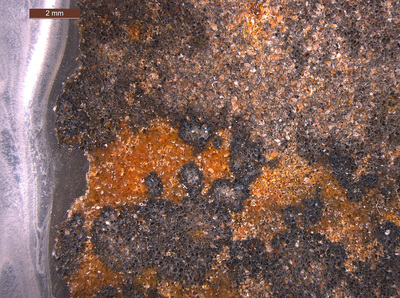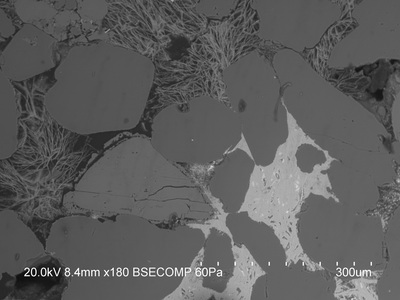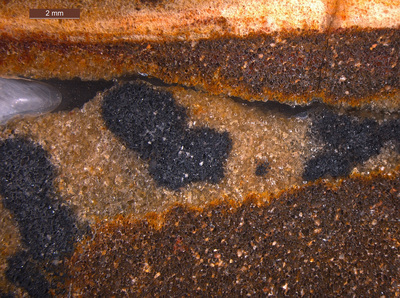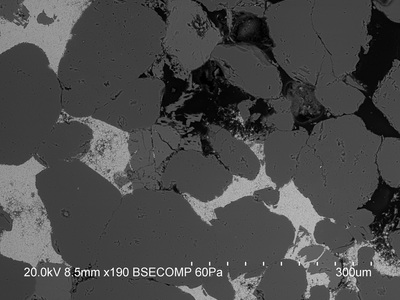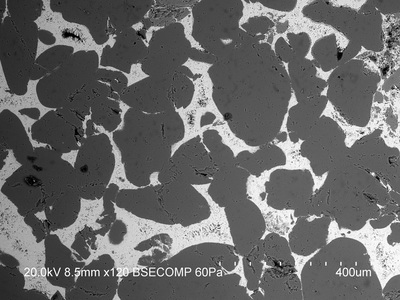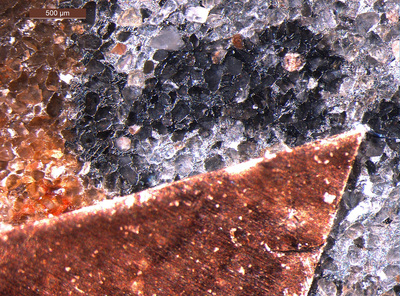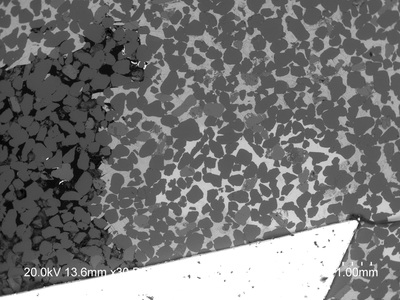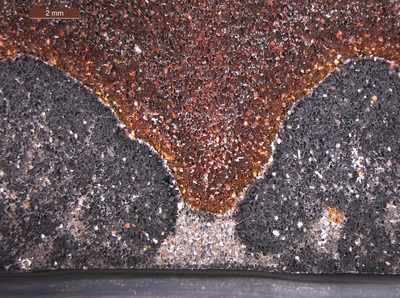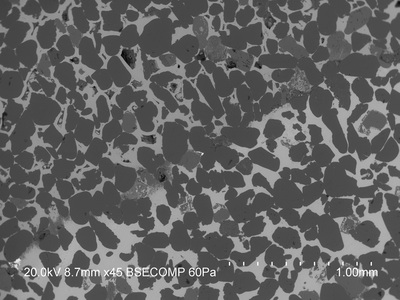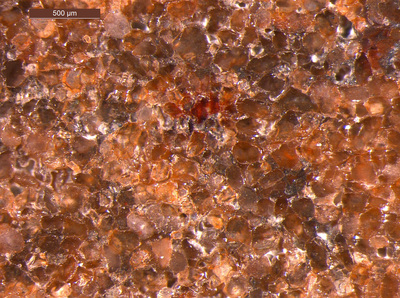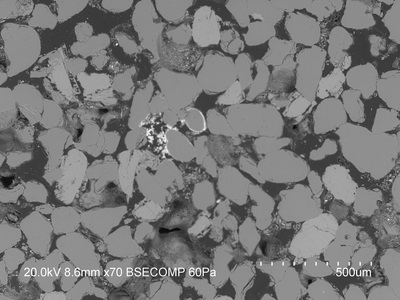|
The South Fault is the most interesting location from which samples were collected. This area has two small normal faults where reduced waters rich in Mn and Fe flowed from left to right coming in contact with oxygenated water after fault movement had occurred, causing the Mn and Fe to precipitate out of solution. A previous study by Chan et al., 2001 dated some of the Mn-oxide from this location using the 40Ar/39Ar system and got ages ranging from 20-25 Ma. We are currently waiting on our (U-Th)/He ages from this fault but if the North Fault is any indication of what is to come we expect the He ages to be much younger than the Ar ages just as they are in the North Fault.
|
Below you will find a few petrographic images and SEM images acquired from samples from this location along with descriptions.
